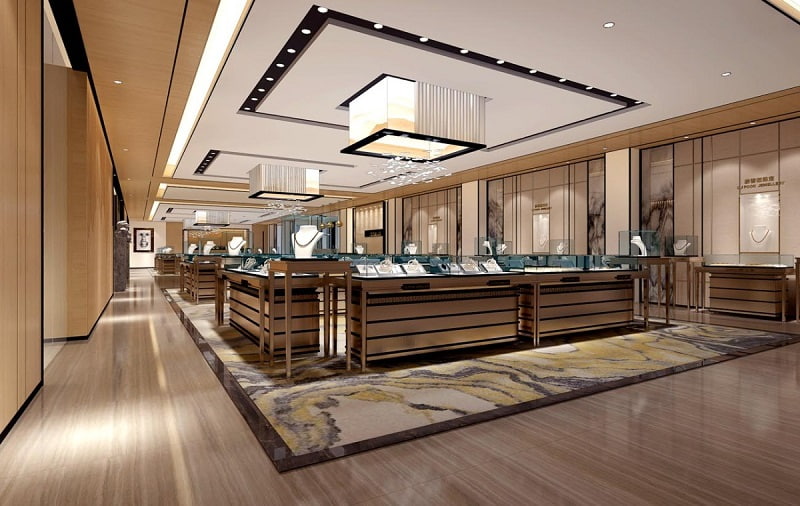You can share
- Share to Facebook
- Share to Google+
- Subscribe to our
- Share to Linkedin
- Share to Twitter

In the exquisite world of the jewelry industry, an inconspicuous packaging box is quietly becoming the core of brand competitiveness. When consumers gently open the lid of the box, the texture touched by their fingertips, the opening and closing sound ringing in their ears, and even the faint natural wood fragrance, all silently build brand awareness. Today's jewelry box suppliers have long surpassed the role of simple producers. They are using technological innovation and sustainable concepts to write a new industry narrative with jewelry brands.
International jewelry giants are redefining their relationship with packaging suppliers. The case of Chopard, a famous Swiss jewelry brand, is quite inspiring: they cooperated with an innovative supplier to develop the world's first carbon-capture environmentally friendly jewelry box, and the box body material seals the carbon dioxide absorbed during the manufacturing process. This breakthrough cooperation is no longer limited to the traditional procurement model. The two parties have established a joint innovation laboratory to share patent benefits. Whenever consumers purchase this series of products, 3% of the packaging cost will be fed back to the supplier as a technology usage fee, forming a sustainable innovation cycle. This profit-sharing mechanism is subverting industry rules, and more and more brands are beginning to realize that excellent suppliers can become strategic partners to leverage market growth.

In the "Packaging Silicon Valley" in northern Italy, a quiet technological revolution is underway. The intelligent micro-factory system developed by a supplier has completely changed the traditional production model. These small factories with distributed layouts can quickly respond to customer needs within a radius of 500 kilometers. Through modular production lines, the factory can complete the process of switching different box types in just 2 hours, and 3D printing technology has achieved true "zero mold" production. A practitioner revealed, "In the past, it took 20,000 yuan in mold fees and a 30-day cycle to develop a new box type. Now it is possible to order 50 pieces and deliver in 3 days." Even more amazing is the digital twin quality control system, which compares the data fluctuations of the production line and the virtual model in real time and controls the defective rate to below 0.3%.
Breakthroughs in materials science are equally exciting. The self-healing coating technology in the laboratory can make minor scratches disappear automatically within 24 hours; the box made of temperature-sensitive color-changing materials displays anti-counterfeiting verification codes through temperature changes; some companies even try to use mycelium and diamond powder to synthesize bio-based materials to create a zero-carbon luxury texture. These innovations not only increase the added value of products but also reshape the industry ecology.
When consumers scan the carbon footprint QR code on the jewelry box, the full life cycle data recorded by blockchain technology will come to life - from forest maintenance at the origin of raw materials to energy consumption details in the production workshop to carbon emissions in transportation mileage. This set of carbon asset management systems led by suppliers is transforming environmental commitments into verifiable competitive advantages. The practice of a light luxury brand shows that the pricing of products with dynamic environmental reports can be increased by 12-18%, and the repurchase rate has increased by 29% year-on-year.
The creation of social value is equally wonderful. Cartier's pilot project in China built a packaging assembly line with a special education school, and the work efficiency of disabled employees exceeded expectations by 15%. In Southeast Asia, fair trade-certified wood packaging materials bring sustainable livelihoods to local communities. These practices prove that when humanistic care is injected into the packaging supply chain, the brand premium generated is far beyond expectations.
Geopolitical uncertainty has given rise to new supply strategies. Forward-looking brands are building a "triangular supply system": handing over high-end craftsmanship to Swiss craftsmen, quickly responding to demand and deploying satellite factories in Southeast Asia, and setting up R&D outposts in Silicon Valley to capture technology trends. The introduction of digital emergency systems adds resilience, smart contracts automatically start backup plans when logistics are delayed, machine learning models dynamically adjust virtual inventory, and even establish encrypted supplier networks as "dark factory" reserves.
The dimensions of measuring supplier value are also evolving. The emerging strategic value assessment model in the industry incorporates factors such as packaging-driven repurchase rate, social media communication index, and carbon credit income into the calculation system. Data shows that the annual revenue of top luxury brands using this model has increased by more than 2 million euros, while traditional brands that ignore the strategic value of suppliers are facing the risk of losing market share.
Standing at the critical point of industry change, jewelry boxes are no longer simple containers. It is the entrance to the product service system, the physical anchor point of the metaverse experience, and the three-dimensional declaration of brand values. When a jewelry box becomes a work of art that collectors are chasing for its unique bio-based materials, and when AR scanning the box can unlock the digital collection, we will finally understand: choosing a supplier is actually choosing a path to the future. Brands that are the first to establish a supplier strategy committee and have the CEO directly supervise the technology roadmap are seizing the initiative in this silent evolution. After all, in the eternal industry of jewelry, true eternity comes from the ability to continuously create value.